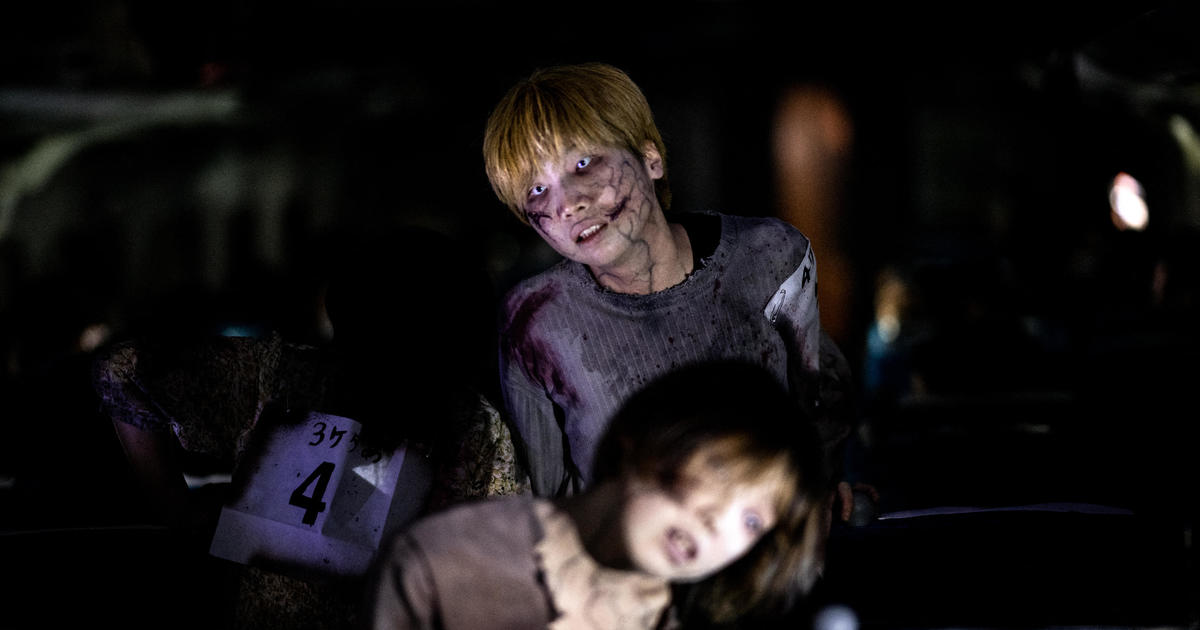The world’s first haunted house experience on a running bullet train, a unique event blending the thrill of a high-speed journey with the fright of a zombie apocalypse, took place recently in Japan. Passengers aboard a chartered car of the Shinkansen, Japan’s famed bullet train, embarked on a two-and-a-half-hour journey from Tokyo to Osaka, unaware of the terrifying transformation awaiting them. The event, masterminded by Kowagarasetai (“scare squad”), successfully recreated the suspense and fear of a zombie outbreak within the typically serene confines of a bullet train ride, marking a significant and innovative approach to entertainment and tourism. The innovative concept seamlessly integrated theatrical performances with the realistic setting, making it a truly unforgettable and groundbreaking experience for participants.
A Unique Blend of Travel and Terror
The Immersive Experience
The journey began as any ordinary bullet train ride would, fostering a false sense of security among the unsuspecting passengers. This initial calm sharply contrasted with the sudden and shocking eruptions of staged “zombie attacks.” Actors, seamlessly integrated among the passengers, enacted scenes of horrifying transformations, jolting participants into a heart-pounding reality. This wasn’t just a simple jump scare; it was a full-fledged theatrical performance utilizing the entire train as a stage. The use of the train’s environment, rather than just a confined space, made the experience unique and genuinely unsettling.
Reactions from Passengers
The surprise factor played a pivotal role in heightening the horror. Many participants reported an incredibly immersive experience that blended seamlessly with the ordinary setting of a bullet train. This strategic blend of everyday routine and terrifying encounter maximized the fear element without compromising the comfort or safety of the passengers. Several passengers expressed their genuine reactions, describing their visceral fear and enjoyment, indicating the success of the terrifying yet safe adventure. International visitors were particularly excited, with one passenger highlighting its “groundbreaking” nature. The element of surprise created an intense atmosphere, highlighting the novelty and impactful nature of the entertainment.
Beyond the Zombie Horde: Diversification of Bullet Train Experiences
Experimentation with Unique Events
The “zombie shinkansen” wasn’t just a one-off Halloween stunt. It is representative of Central Japan Railway Company’s proactive attempts to diversify its offerings in response to the fluctuating demand for long-distance travel, especially in the wake of the COVID-19 pandemic. Beyond the success of the Halloween event, this innovative approach opens possibilities for new forms of high-speed train travel entertainment. Instead of solely focusing on transportation, they’ve moved towards making the journey an event in itself. This highlights the adaptive nature of railway operators in a changing economic climate and the wider embrace of new business models.
The Potential of the Shinkansen as an Entertainment Venue
The success of this unique event suggests vast potential for further innovative utilization of the shinkansen. Already, other ventures have successfully taken place, including sushi restaurants, bars, and even wrestling matches. Future events such as concerts and comedy shows are being considered, highlighting the potential of the train itself to become a dynamic and multi-faceted entertainment platform. The adaptability of the shinkansen beyond mere transportation is both innovative and potentially lucrative, extending its purpose well beyond its core function. The railway company acknowledged this latent potential by actively seeking and embracing the opportunities offered through events.
The Planning and Execution: A Balancing Act
Managing the Fright Factor
The event’s organizers skillfully balanced the scare elements with other forms of light-hearted entertainment. While the zombie outbreak created thrilling suspense, elements like performances by zombie cheerleaders, magicians, and comedians – and even a choreographed dance to Michael Jackson’s “Thriller” – offset the sustained terror, ensuring an overall positive and entertaining experience. This careful balancing of intense horror and playful moments speaks to the expertise and attention to detail that went into the overall production, demonstrating a genuine concern for the participants.
Ensuring Safety and Avoiding Controversy
Concerns about violence and gore were addressed carefully. While the zombie makeup and action were intended to create fear, depictions of extreme violence were avoided, minimizing any potential negative impact on the bullet train’s normally squeaky-clean reputation. The delicate balance struck between fear, entertainment, and preserving the reputation of the shinkansen showed a commitment to thoughtful planning and risk management. This careful consideration helped ensure the safety and enjoyment of the participants without negatively affecting the reputation of the Shinkansen.
Takeaway Points
- The “zombie shinkansen” was a successful experiment blending travel and entertainment.
- It demonstrated the potential for diversification of the shinkansen’s functionality.
- It showcased the importance of balancing terror and entertainment for positive customer experiences.
- The success suggests new possibilities for event-based high-speed rail travel.
- The event showcased creative adaptation to challenges presented by the changing economic and entertainment landscape.




